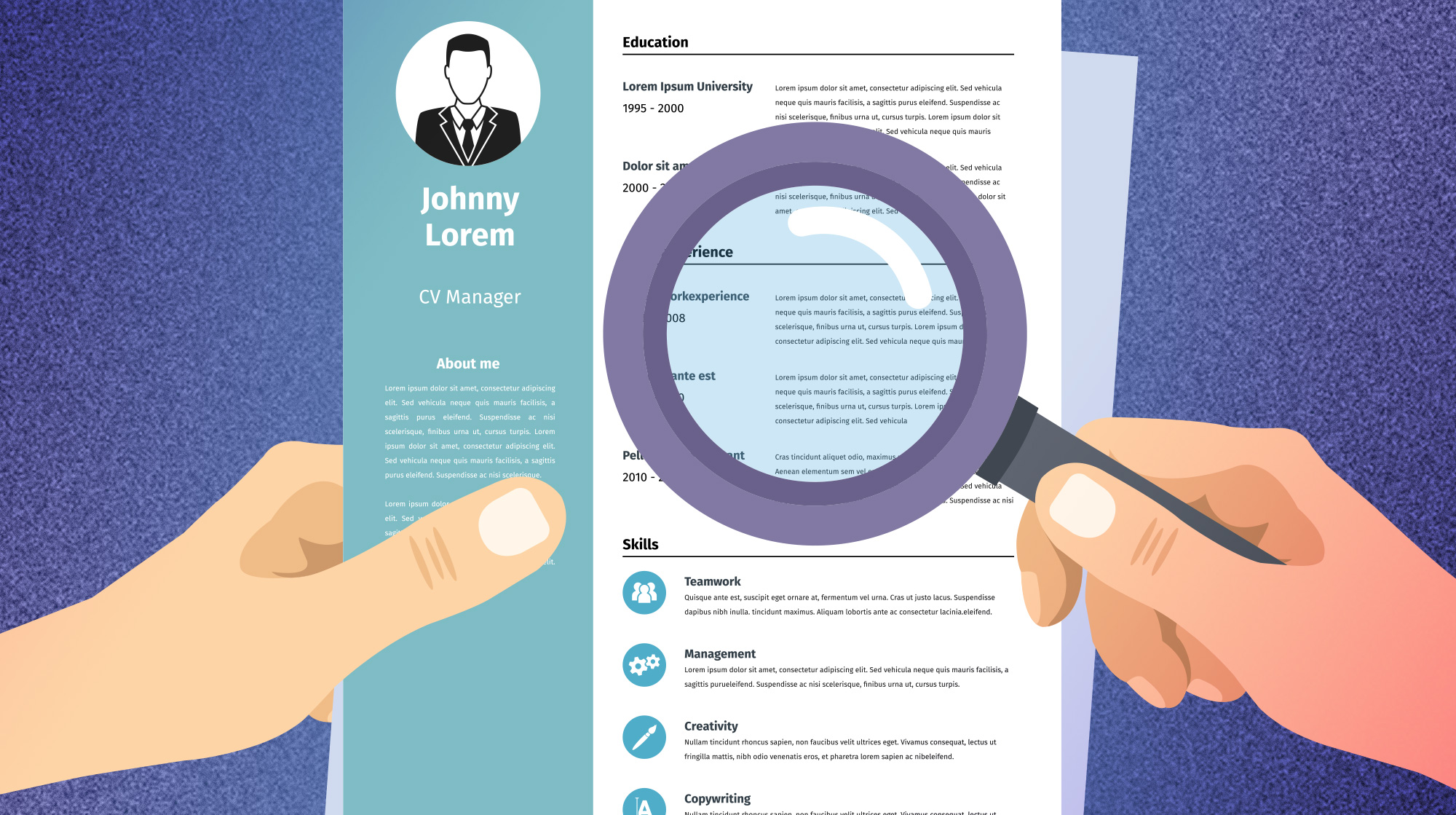Career resources content posted on NEJM CareerCenter is produced by freelance health care writers as an advertising service of NEJM Group, a division of the Massachusetts Medical Society and should not be construed as coming from, or representing the views of, the New England Journal of Medicine, NEJM Group, or the Massachusetts Medical Society
You wouldn’t think twice about emailing your department chair, training director, or service chief to set up an appointment. The same holds true for taking advantage of networking opportunities at a medical specialty conference. Planning ahead with a brief email is essential to confirm meeting times with faculty, recruiters, or colleagues. Be sure to upload the latest version of your CV to your personal device so you can send it along at a moments notice.
— John A. Fromson, MD*
Physicians who plan ahead and use their onsite time wisely can make valuable connections to boost their job-search activities.
By Bonnie Darves
Residents who attend their medical specialty conferences make the trip primarily to enhance their skills and expose themselves to the experts who present new research findings or report on what’s new and exciting. Those conferences also serve other valuable purposes by providing a satisfying way to network with far-flung colleagues and possibly identifying future practice opportunities.
Physicians can network and explore potential jobs by simply showing up and making the effort to reach out while onsite, but there are far more effective ways to make use of the time attendees plan to allocate for such activities. Thomas Fise, JD, executive director of the Association of Program Directors in Surgery, encourages all physicians, but residents in particular, to approach conferences with an eye to “programming” their onsite time — ideally well in advance of showing up.
Often, Mr. Fise explains, young physicians “wait until they get to the meeting before they try to make connections with people they want to meet.” That might be, in many cases, too late, if more proactive attendees have already booked the expert’s, researcher’s, or prospective employer’s time. “It’s wise to make the effort to actually program your time at the conference, by reviewing the meeting materials thoroughly in advance to identify ‘not-to-miss’ events, and any presenters or colleagues you hope to meet,” said Mr. Fise, who has been in physician-organization management for more than two decades.
He reminds young physicians that pharmaceutical companies, device makers, and potential employers that attend conferences recognize the meeting “as a unique assemblage of thought leaders. Attendees should do the same,” he said. “Meetings present a valuable opportunity for young physicians to spend time with an important contact in their practice area, procedure, or research, and they’re more likely to make that connection if they plan ahead.”
For example, he recommends sending an email message or making a call to the senior colleague a week or more in advance of the conference, to try to set a brief meeting. The message should be respectful, concise, and specific, as in: Hello, Dr. Smith. I am very interested in your research on XX/am working in the XX area, and I look forward to your presentation next week. I’d like to meeting with you for five minutes after your presentation to ask you a few questions, if your schedule permits. “There’s a reticence among residents and young surgeons to try to set up a conversation with someone who’s doing important work in their field, but it’s worth a try,” Mr. Fise said. “It’s much better than being one of eight people who converge on the speaker after the presentation.”
The same basic approach might work if the trainee simply wants to ask a few questions about the practice where the expert is based, out of personal interest for the future, and even when no positions are open. This “informational interview/inquiry” strategy pays off more frequently than physicians might expect, Mr. Fise noted, as physicians often leave a very good position where they’d been happy, for family reasons.
Mr. Fise advises residents to take a similarly direct approach onsite, when they find themselves in the same room with a specialty leader whose presentation they attended that day. When the person isn’t engaged in conversation, it’s an ideal opportunity, he said, to walk up confidently, and say, for example: I heard your presentation today, and I think that the work you’re doing in XX is very important/represents the approach we should be taking now as a specialty.
“The expert might claim to be too busy to talk, or might even rebuff you, but what have you lost for trying?” Mr. Fise pointed out. He urges young physicians to remember that specialty leaders and mentors were once in their shoes, and many might be far more willing to engage than expected.
Laura Screeney, president of the Association of Staff Physician Recruiters and director of physician recruitment for New York Presbyterian, echoes Mr. Fise’s view on the importance of planning ahead to enhance networking. “Take the time to review the conference website thoroughly, to get sense of who will be there (as attendees) and who will be exhibiting. This helps you plan your free time much more effectively,” Ms. Screeney said. “And make sure that you have an up-to-date, clean copy of your CV available on your personal device, so that you can shoot it off quickly to anyone who requests it.”
It’s somewhat surprising to her, Ms. Screeney noted, that physicians and trainees often show up at specialty conferences relatively unprepared to act quickly to respond to a recruiter or potential employer’s interest. And she concurs with Mr. Fise that sending an email ahead of the conference to anyone who might play a role in the future job search — a presenter, a trainee colleague at an institution of interest, or a recruiter who focuses on the physician’s specialty — is effort well expended. “It’s very important to use that preparation time wisely, to help ensure your onsite networking is effective,” she said.
Explore onsite avenues
For trainees or physicians who are a year or more out from starting their opportunity search in earnest, it still makes sense to plan ahead of the meeting to maximize exposure to potential employer organizations. Laura Schofield, senior director of physician recruitment for the Cambridge Health Alliance in Cambridge, Massachusetts, urges prospective attendees to review in advance the academic centers or health systems that will have a presence or booth at the meeting, and reach out to the recruiter or other contact person listed.
“Often, these individuals will be happy to set an appointment during the meeting to talk about their organizations and the kinds of practice positions that have been filled or opportunities that might be available in the future,” Ms. Schofield said. For example, the recruiter or clinical representative might know that a department expansion is planned, or that one or more physicians are nearing retirement.
Ms. Schofield also advises residents who are fairly certain about the geographic area(s) where they hope to practice (or must, for family reasons) to identify organizations in those areas that will have a presence at the conference or that might at least be posting positions on the meeting job board. “If you reach out in advance, you might find that the organization will have a physician representative onsite at the meeting. And connecting onsite is a good way to learn more about not only the organization but also the regional market and even other practices in that market,” she said. “It’s an easy way to get some basic information.”
That way, the physician attendee who does decide to follow up after the meeting to express preliminary interest in some future potential position isn’t “just another CV,” Ms. Schofield explained. “If you have any interest in the organization, follow up right away by sending your CV and a brief note indicating that you enjoyed meeting the person at the meeting and would like to know of any positions that open up.”
Preparation can pay off
If the geographic location of the future practice position is set in stone — and increasingly, with two-physician couples, this is the case — physicians attending a meeting in the desired location or region should definitely maximize their “on-the-ground” time, Ms. Schofield said. She recommends that trainees even consider staying on after the meeting or heading into town early, to make connections.
“It’s a good idea to contact several employer organizations in the area before you arrive, and ask if they’ll have a representative at the meeting,” she said, “or offer to travel to their offices if it’s an organization you’re especially interested in.” A starting script for that contact email or phone call might go something like this: I am in the early stages of my job search, and because of family/personal reasons, Illinois/Arizona is a strong area of interest for me. I’ll be in XX in May attending the XX meeting, and would like to meet with someone from your organization.
Such proactive approaches are usually very well received, Ms. Schofield said, and it would not be unusual for the contacted organization to arrange a meeting between the young physician and a colleague in her specialty. “It’s all about meeting people and following up — and it’s really an easy, no-pressure way to start looking into opportunities,” she said. She added that such encounters, typically relatively informal, are “good training” for the formal interviews that trainees will eventually undergo.
Ms. Schofield advises meeting attendees to be strategic even in their “wanderings” through the exhibit hall, by taking notes on the booths or individuals they’ll want to visit later. If a health organization recruiter is tied up, plan to come back to the booth at a different time, she said, or leave a note requesting a call or text indicating a good time to meet. “The point is that physicians in training have very little time to network face to face during residency, so it’s important to maximize these rare opportunities to connect with peers or leaders in their specialty,” she said.
Michael Scott Linn, MD, an orthopedic surgeon who completed a fellowship at Washington University in St. Louis, Missouri, used the onsite job center strategically when he attended the American Association of Orthopedic Surgeons conference during his final year of residency. “I signed up for interviews and meetings with recruiters for any opportunity that sounded even remotely interesting. My thought was that it might be worthwhile, even if it wasn’t what I thought I was looking for, and it was early to start looking,” Dr. Linn said. “I figured it would be good practice to talk to anyone who wanted to talk to me, before I actually started interviewing.”
As things turned out, an informal meeting with a recruiter at that conference transpired into the practice position Dr. Linn later accepted, at Northwell Health’s Southside Hospital in Bayshore, New York. “I reached out to the recruiter because I was interested in the region, and I ended up also meeting a senior administrator from the hospital,” he recalled. “The interesting thing was that there wasn’t even a position open at the time, but they called me later when one did become available — on the basis of our meeting at AAOS. And it’s been a great opportunity.” Dr. Linn has been instrumental in helping the facility prepare for becoming a Level II trauma center, which has proved an exciting undertaking. “My experience shows that it’s worthwhile to make the time to meet with recruiters at the meetings, because you might learn about jobs that you didn’t know existed,” he said.
Make the meeting count
To make the most of both the educational and networking opportunities medical meetings offer, it’s important to follow though after the event. That’s something many young physicians don’t focus on enough, Mr. Fise observed, because they often find themselves overwhelmed on their return to residency or work. He recommends that attendees consider those hours in transit back home as an ideal opportunity to keep the momentum going, by recapping the meeting’s four or five educational high points in writing, and committing to next steps that they’ll take. That might be sending emails to a half-dozen attendees or presenters they enjoyed, or drafting an abstract on a research project they would like to undertake based on a presentation they attended.
“It’s a common phenomenon that physicians go to a meeting and get excited about all the great things they hear. But then, even though they have the best intentions, they return to work and get pulled back into what they’re doing,” Mr. Fise said. “I think it’s important to choose a few things that you’ll do, and make the time to do them, whether that’s letting a presenter know how much you enjoyed a session, proposing an article for your journal club, or writing to the president of your specialty and saying you’d like to become active. Any of those will pay off at some point.”
Tips for making the most of medical meetings
Following is a brief summary of the tips offered by the sources interviewed for this article:
Plan your time before you go. Reach out to individuals in your specialty — even the leaders — whom you’d like to meet onsite, or presenters whose sessions are a “must-go” on your list. Ask for five minutes of their time, and try not to be dismayed if you don’t get a response.
Have your CV polished and ready for dissemination onsite. Too often, young physicians go to meetings unprepared to send their up-to-date CV immediately when it’s requested. Get the document into top shape, and upload it to your personal device so that you can send it while you’re talking to a recruiter or potential employer.
Review the exhibitors’ list and meeting job board. Rather than simply wandering among the booths, review the exhibitors’ list and the online job board, and map out your time and travels between sessions to make the most of networking activities.
Add time to explore the area. If the meeting is held in a geographically desirable place, from the standpoint of where you might want — or need — to practice, go early or stay on afterward to visit with potential employer organizations. Many practices and health systems happily welcome physicians for brief “informational” interviews, and those encounters might turn into the ideal opportunity down the road.
Don’t stop networking when you get home. Follow up with people you met, and follow through on any potential leads in the days after the conference — not two months later.
*Dr, Fromson serves as the editor for Career Resources and is Vice Chair for Community Psychiatry, Brigham and Women’s Hospital; Chief of Psychiatry, Brigham and Women’s Faulkner Hospital; Associate Professor of Psychiatry, Harvard Medical School.






